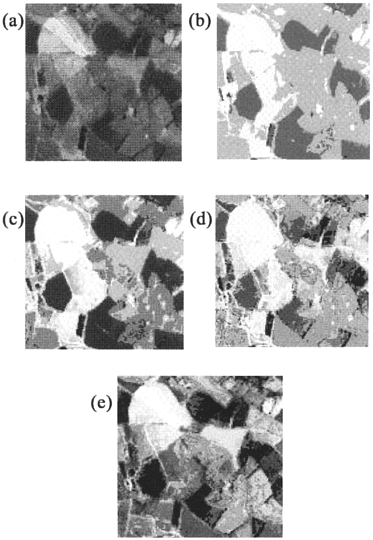51.
| [Cover] [Contents] [Index] |
Page 143

Figure 3.20 (a) Combined three-band SPOT HRV image (©CNES 1994, SPOT Image Distribution), (b) Image formed by fuzzy ART with 0.6 vigilance, (c) Image with 0.7 vigilance, (d) Image with 0.8 vigilance, (e) Image with 0.9 vigilance.
resulting numbers of cluster corresponding to each vigilance level are 19, 40, 64 and 124, respectively. Note that some clusters formed by the ART network contain only two or three pixels. This is a specific characteristic of ART in comparison with other traditional clustering algorithms, in which clusters are unlikely to be made up of such a small number of pixels.
An example of the use of fuzzy ARTMAP for remote sensing image classification is presented by Carpenter et al. (1997) in which the results output by a fuzzy ARTMAP classifier are compared with those produced by the maximum likelihood, nearest neighbour, and multilayer perceptron methods. Carpenter et al. conclude that the fuzzy ARTMAP is faster and
| [Cover] [Contents] [Index] |
EAN: 2147483647
Pages: 354